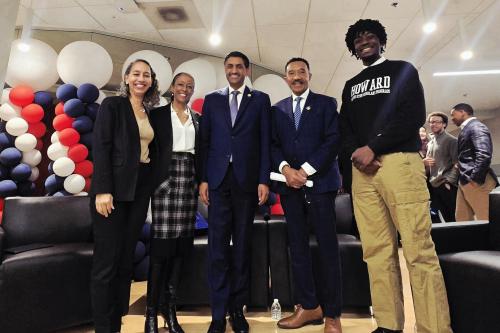WASHINGTON – As the world practices social distancing due to the coronavirus pandemic, more people are turning to various news sources for content. According to Howard University Associate Professor Jennifer Thomas, this opens up the opportunity for a Pandora's Box of misinformation to spread.
“Anyone with a smart device can post content, whether the intention is to inform or to try to fool someone,” says Thomas. “We, as consumers of this information, must be intentional in learning how to decipher between what's real and what's fake.”
According to Statista.com, during the week of April 14 - April 20, approximately 67 percent of Americans retrieved their news from TV, 49 percent from news websites, 33 percent from search engines, 34 percent from social media, 20 percent from scientific or medical websites, and 13 percent from radio shows.
Although the sources of information are familiar for Americans, the Center for Disease Control and Prevention (CDC) was the most trusted source at 85 percent (March 2020, Statista). Thomas noticed that there would be an uptick in fake news, too.
For the past two years, Thomas served in the Media Speaker Program sponsored by the United States Department of State and the U.S Embassy in Nigeria, and South Africa, for Media Freedom Week. Recently, she was awarded “Teacher of the Year” by the Scripps Howard Foundation in partnership with the Association for Education in Journalism and Mass Communications (AEJMC).
In light of World Press Freedom Day, May 3, Thomas reflects on what she shared in her keynote address in Nigeria on the subject.
“The current climate for the news industry is synonymous to a thunderstorm, with the convection being the calamity of the ‘Fourth Estate’ as ‘Fake News.’ Add the unpredictability of social media, and it becomes the perfect storm. In order to quell this tempest, journalists must ride out the storm and steady the ship through adhering to the fundamental principles of the profession.” Consumers of information must also play a role, she says.
To combat fake news, Thomas has five tips for the community to keep in mind:
- Consider the source
- Check out the URL
- Look at the byline and author
- Check out the "About Us" section
- Be Skeptical
The former CNN executive producer and veteran award-winning broadcast journalist has covered major events such as the September 11th Terror Attacks and Hurricane Katrina. At Howard, she has produced live election specials for PBS affiliate WHUT TV, supervised broadcast coverage of the 2016 Democratic National Convention, and reported from the U.S. Mexico border with the U.S. Border Patrol.
As a published author, her research interests include the dissection of current practices and pedagogies in journalism, the transition from professional to professor, and the complex facets of women, media, and images. She has also served as a presenter, panelist or moderator for several agencies and organizations including the National Association of Broadcasters, ICMA-RC Executive Advisory Council, and the U.S. Department of State.
Sources:
COVID-19 pandemic information sources 2020. (2020, April 21). Retrieved April 21, 2020, from https://www.statista.com/statistics/1108009/sources-of-information-about...
Most trusted coronavirus news sources in the U.S. 2020. (2020, March 23). Retrieved April 21, 2020, https://www.statista.com/statistics/1104557/coronavirus-trusted-news-sou...
# # #
About Howard University
Founded in 1867, Howard University is a private, research university that is comprised of 13 schools and colleges. Students pursue studies in more than 120 areas leading to undergraduate, graduate and professional degrees. The University operates with a commitment to Excellence in Truth and Service and has produced one Schwarzman Scholar, three Marshall Scholars, four Rhodes Scholars, 11 Truman Scholars, 25 Pickering Fellows and more than 70 Fulbright Scholars. Howard also produces more on-campus African-American Ph.D. recipients than any other university in the United States. For more information on Howard University, visit www.howard.edu
Media Contact: Imani Pope-Johns, Imani.popejohns@howard.edu




